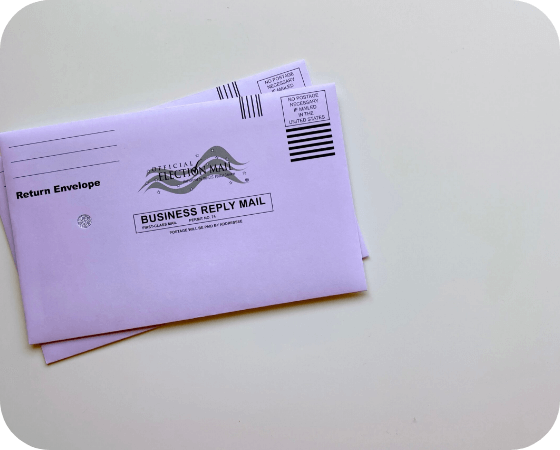The 2022 primary season kicks off in Texas on March 1, and with the start of primary season comes some big questions about which direction either party will go. Democrats will be duking out over what direction the party will take after its agenda has largely stalled in Congress, while Republican candidates face tough questions about former President Donald Trump’s role in the party and whether they acknowledge the results of the 2020 presidential election.
On top of this, the 2022 primary season includes numerous races for offices like governor and attorney general, who will play an important role in certifying election results for 2024 and beyond, adding extra weight to the questions some candidates will face over democracy and the legitimacy of the 2020 election.
Wait, what is a primary? Political parties hold primary elections to select their nominees for candidates who will run on behalf of the party in the general election. In a primary, Republicans run against Republicans, while Democrats run against other Democrats. In contrast, the general election determines which candidates will occupy offices that are up for election.
Additionally, different states have different rules on how they conduct their primaries. These are the four types of basic primary elections:
- Open primaries, where anyone of any political party affiliation may vote.
- Closed primaries, where only those voters who registered with that particular political party may vote.
- Hybrid primaries, also called semi-open and semi-closed primaries, where anyone of any political party affiliation can vote, but can only vote in one primary.
- Runoff primaries, where a few states hold a second primary between two candidates with the most votes. Of note, both Louisiana and Georgia will have runoff races for their general elections scheduled after Election Day on November 8 for the top-two candidates if one candidate fails to win at least 50% of the vote in their most recent primary.
Below is a list of all key primary dates for congressional races with their respective state and runoff status.
| Date | State | Type |
|---|---|---|
| March 1 | Texas | Runoff |
| May 3 | Indiana | Open |
| May 3 | Ohio | Open |
| May 10 | Nebraska | Hybrid |
| May 10 | West Virginia | Hybrid |
| May 17 | Idaho | Hybrid |
| May 17 | Kentucky | Closed |
| May 17 | Oregon | Closed |
| May 17 | Pennsylvania | Closed |
| May 17 | North Carolina | Runoff |
| May 24 | Alabama | Runoff |
| May 24 | Arkansas | Runoff |
| May 24 | Georgia | Runoff |
| May 24* | Texas* | Runoff |
| June 7 | California | Open |
| June 7 | Iowa | Open |
| June 7 | Mississippi | Runoff |
| June 7 | Montana | Open |
| June 7 | New Jersey | Hybrid |
| June 7 | New Mexico | Closed |
| June 7 | South Dakota | Hybrid |
| June 14 | Maine | Closed |
| June 14 | Nevada | Closed |
| June 14 | North Dakota | Open |
| June 14 | South Carolina | Runoff |
| June 21 | Virginia | Open |
| June 21 | Alabama* | Runoff |
| June 21 | Arkansas* | Runoff |
| June 21* | Georgia* | Runoff |
| June 28 | Colorado | Hybrid |
| June 28 | Illinois | Open |
| June 28 | Maryland | Closed |
| June 28 | New York | Closed |
| June 28 | Oklahoma | Runoff |
| June 28 | Utah | Hybrid |
| June 28* | Mississippi* | Runoff |
| June 28* | South Carolina* | Runoff |
| July 26* | North Carolina* | Runoff |
| August 2 | Arizona | Hybrid |
| August 2 | Kansas | Hybrid |
| August 2 | Michigan | Open |
| August 2 | Missouri | Open |
| August 2 | Washington | Open |
| August 4 | Tennessee | Open |
| August 9 | Connecticut | Closed |
| August 9 | Minnesota | Open |
| August 9 | Vermont | Open |
| August 9 | Wisconsin | Open |
| August 13 | Hawaii | Open |
| August 16 | Alaska | Open |
| August 16 | Wyoming | Open |
| August 16 | South Dakota | Hybrid |
| August 23 | Florida | Closed |
| August 23* | Oklahoma* | Runoff |
| September 6 | Massachusetts | Hybrid |
| September 13 | Delaware | Closed |
| September 13 | New Hampshire | Hybrid |
| September 13 | Rhode Island | Hybrid |
| November 8 | Louisiana | Runoff |
| December 6* | Georgia* | Runoff |
| December 10* | Louisiana* | Runoff |
*Indicates runoff election date.

